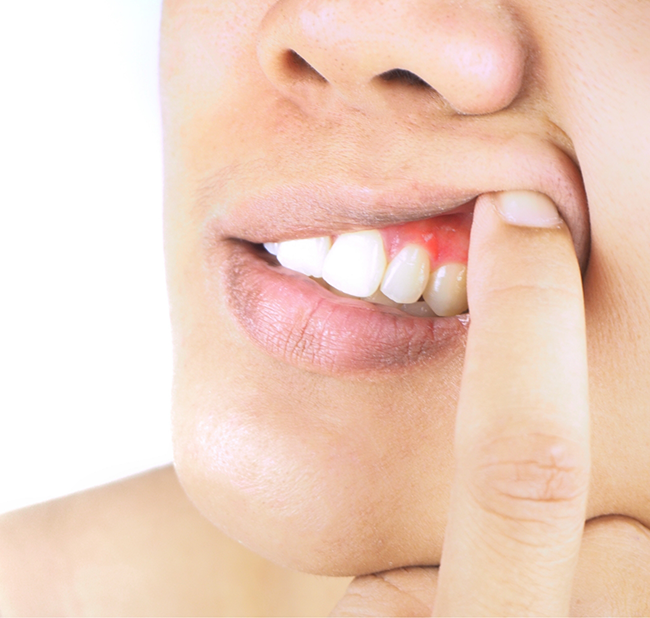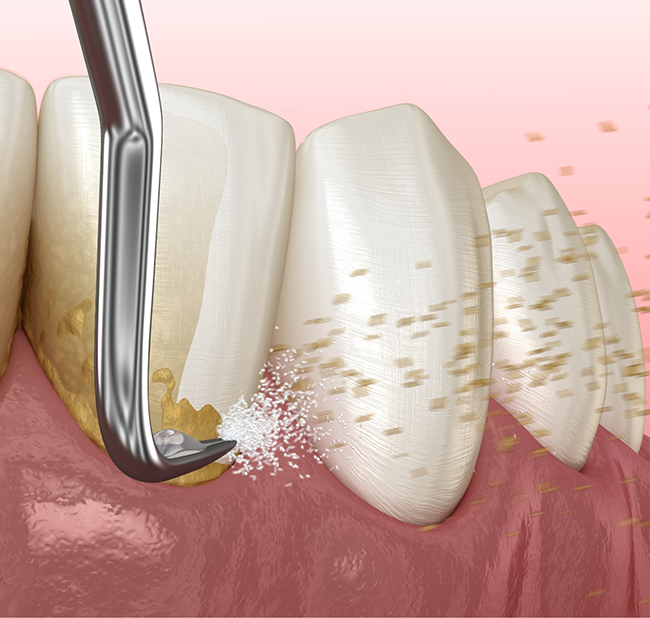Gum Disease Treatment Brookline
Addressing This Serious Condition at Its Source

Gum disease is truly a menace, and despite the condition’s name, it doesn’t just harm your gum tissue – it can also harm your teeth and even lead to tooth loss if things go unaddressed for too long! Thankfully though, it’s something that our in-house periodontist, Dr. Shih, and the rest of our team can often reverse before things get too bad. To learn more about gum disease treatment, or to schedule an appointment if you believe you’re suffering from the condition, don’t wait to contact our Brookline dental office today.
Why Choose Royal Dental Brookline for Gum Disease Treatment?
- Advanced Dental Technology Ensures Personalized Care
- Experienced, Board-Certified Periodontist on Staff
- Dental Insurance Welcome and Financing Available
Do I Have Gum Disease?

It’s estimated that over half of all adults over the age of 30 have some form of gum disease – however, gum disease can manifest differently for patients, and some may experience symptoms while others unknowingly have the condition. A few of the most common signs of gum disease include:
- Swollen, puffy gums that are reddish or purplish in color
- Gums that bleed easily, especially when brushing your teeth
- Chronic bad breath that won’t go away
- Pus between your teeth and gums
- Pain or difficulty when chewing
- Gum recession, which is when your gum tissue begins pulling away from your teeth
If you’re noticing any of these symptoms, you shouldn’t hesitate to reach out to schedule an appointment; when left untreated, gum disease can lead to total tooth loss, among other serious issues!
Scaling & Root Planing

Scaling and root planing refer to a pair of procedures that often serve as the best means of addressing gum disease that doesn’t respond to an improved oral hygiene regimen. Using specialized instruments, we can carefully clear out the pockets of harmful bacteria that are trapped beneath the gumline. Once this has been accomplished, we’ll smooth out the roots of the teeth so that the surrounding gum tissue is able to healthily reattach itself. This process can normally be completed in a single appointment, but sometimes two might be required.
Periodontal Maintenance Program

Once you have received a diagnosis of gum disease, it is important that you remain extra-diligent about caring for your precious gums. Our periodontal maintenance program for Brookline patients can help you do that. Through regular monitoring of your gum tissue, we can spot early signs of gum disease recurrence. We can also provide personalized coaching on oral hygiene, as well as offer prompt interventive care, such as scaling and root planing or antibiotics, if we notice that you need a bit of extra help to prevent gum disease from coming back in full force.
Gum Grafts

If it progresses far enough, gum disease can cause the tissue around your teeth to recede. Not only can this make your teeth appear longer, but it can also cause extra dental sensitivity. With a gum graft, we can use tissue from another source, possibly from the roof of your mouth, to cover your tooth roots. This can improve your smile’s proportions and lead to more comfortable oral function.
Bone Grafting

Did you know that advanced gum disease can attack the jawbone as well as the soft tissues in your mouth? As the bone deteriorates, it can compromise your teeth’s base of support and cause them to loosen. A bone graft is a service where we add bone material, possibly synthetic bone or bone from a donor, to your jaw. This strengthens it and may prevent the need for tooth extractions. Or, if you have already lost some teeth, it can make your jawbone strong enough to support dental implants.
Ridge Augmentation

Your teeth are attached to a portion of your jawbone known as the alveolar ridge. Gum disease and other issues may cause this ridge to be overly narrow; it might not be able to support dental implants or other forms of tooth replacement. Ridge augmentation can help. It is a special type of bone graft, wherein we wedge the ridge apart and place a graft in its center. After it heals, the ridge is wider and stronger than it was previously.
